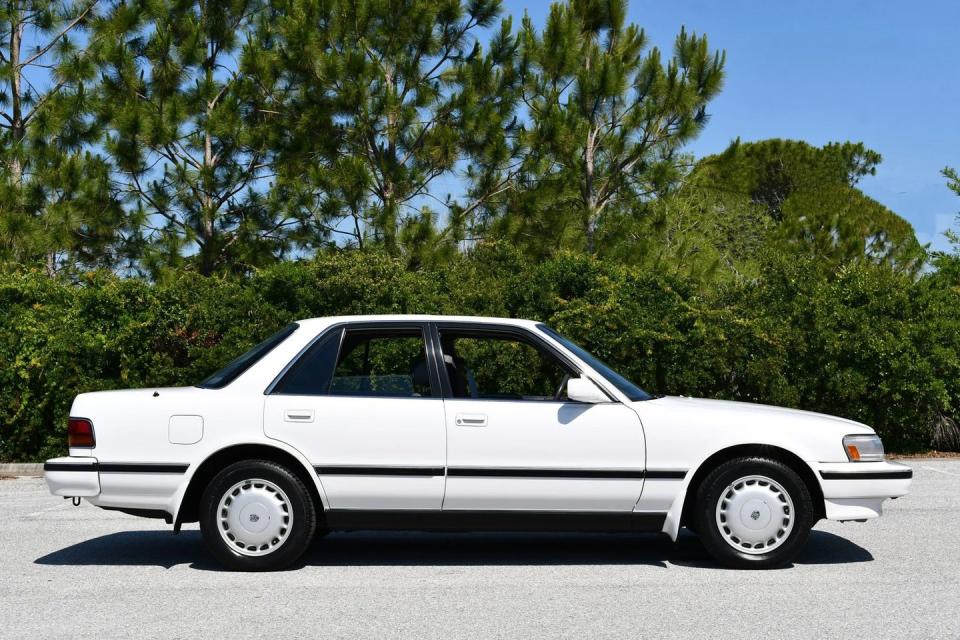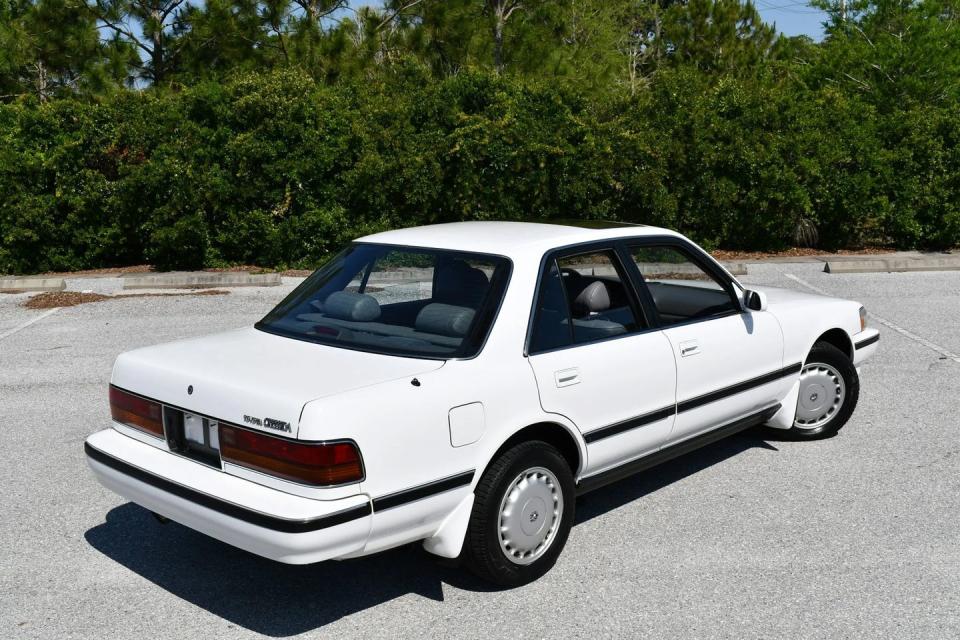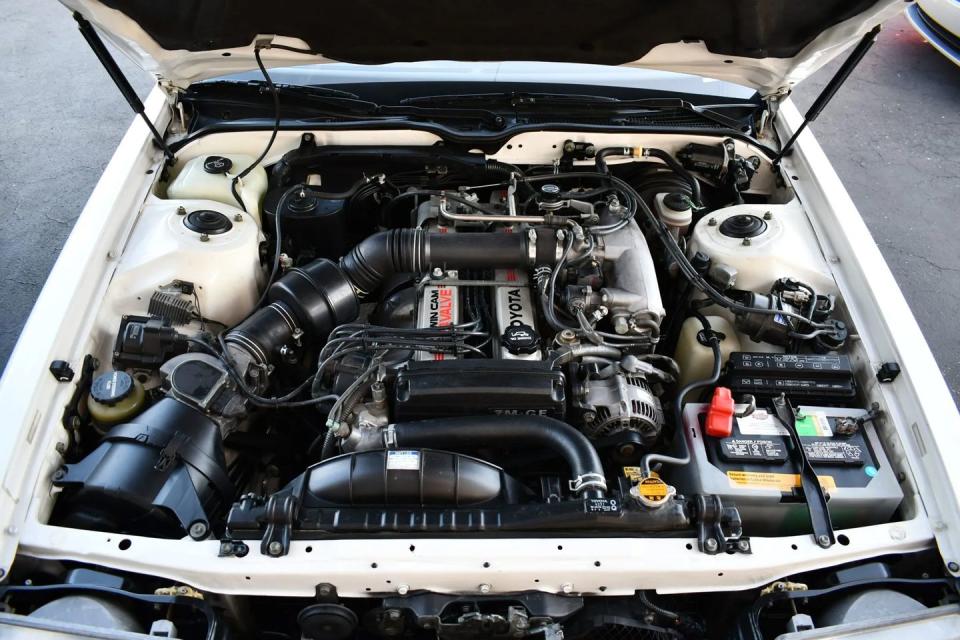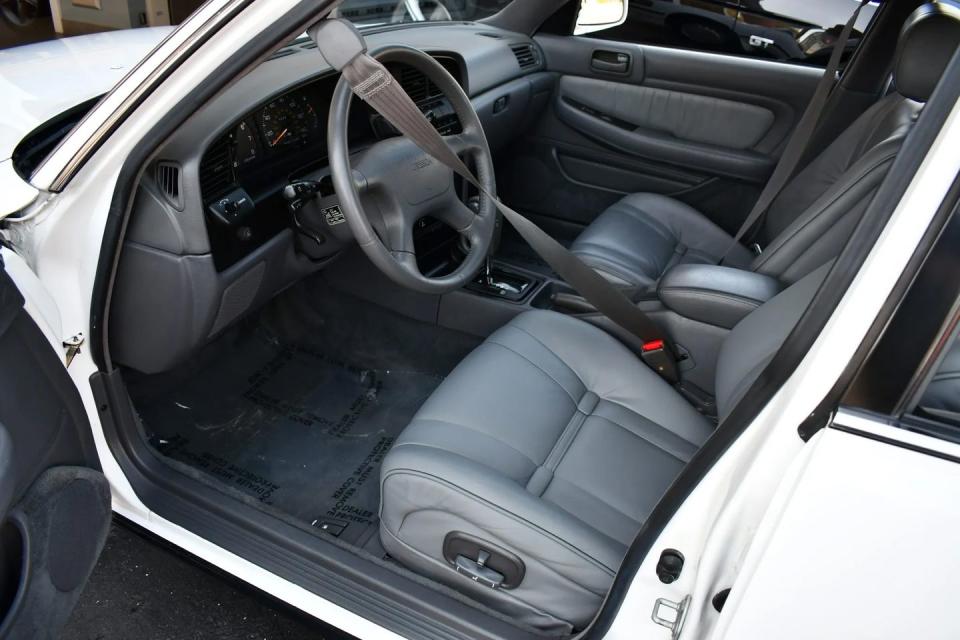Proto-Lexus 1990 Toyota Cressida Is Today's Bring a Trailer Pick

A luxurious sibling of the JDM Toyota Mark II and Chaser, the Cressida was the fanciest car in the company's American lineup from 1978 to 1992.
Designed to be a quiet, cossetting luxury car, the Cressida sold mainly to older buyers when new, but its rear-wheel-drive layout and Supra-derived straight six later made it popular with drifter and Shakotan stance fans.
Once Lexus arrives, Cressida sales tanked. Three decades later, clean and unmodified survivors like this one are rare.
The final Toyota Cressida might be the best version of this one-time flagship but also the least well-remembered. It arrived in late 1988, still as visually conservative as a Brooks Brothers suit but now packing a 190-horsepower punch. It was greeted by rave reviews, but only months later it was permanently eclipsed by the supernova-like debut of Lexus. It lingered in showrooms like a well-dressed zombie until 1992 and was largely forgotten until drifters discovered it two decades later.

Drift racers and Shakotan stance fans certainly weren't this car's intended market, but with the rear-drive chassis of the JDM Toyota Chaser and a Supra-derived straight six, the appeal is obvious. Many final-generation Cressidas have been modified today. This phenomenon, and the car's low sales numbers, make examples like this 45,000-mile 1990 model for sale on Bring a Trailer (which, like Car and Driver, is part of Hearst Autos) very rare now.

Overshadowed by Lexus, these Cressidas were worth peanuts by the 2010s, which drew in drifters who saw their potential. Things were different when they were new.
The Cressida arrived as the company's American flagship in 1978 and remained its priciest U.S. sedan until production ended. Its purpose was to give Toyota dealers a premium car for customers to trade up to when they outgrew their Coronas. Most Americans thought of Japanese cars purely as cheap transportation back then, but the Cressida came along just as perceptions began to change. Unlike the previous Crown and Mark II, it was modestly successful right away and sales steadily rose into 1985.

By then, President Reagan and Japanese Prime Minister Zenkō Suzuki had negotiated "Voluntary Export Restraints." This set quotas on how many Japanese cars could be sold here but didn't stem demand, leading to waiting lists. If you can only supply so many cars, Toyota thought, why not make them more profitable ones? Work on Lexus began in 1983.
In the meantime, the Cressida continued to impress. It was expensive for a Toyota and not as exciting or prestigious as a BMW 5-series, but it offered a similar package and superlative quality at a lower price. The MX83-generation model bowed in late 1988, by which time the Acura Legend had taken a bite out of sales and foreshadowed Lexus' success. The new Cressida was again based on the JDM Mark II, but was faster and more luxurious than ever.

Toyota's engineers, led by Tadakiyo Watanabe, had designed a quieter and more rigid body shell, and much of Watanabe's discussion with the press at the time centered around noise and comfort. Most journalists, however, gravitated to the engine. With 190 horsepower, the 7M-GE 3.0-liter six was 22 percent more powerful than the outgoing car's 2.8-liter 156-horse six, and it used a new computer-controlled four-speed automatic for faster shifts. The rear suspension had also been redesigned, and anti-lock brakes joined the options list.
It wasn't a sports sedan, but it was fun to drive and came with many amenities, such as cruise control, a premium audio system, and power everything. Reviews were glowing, though the soft-edged styling looked a little too Camry-like to some.
Cressida sales rose 68 percent in 1989, to just under 24,000 cars, but that summer a flood tide of orders poured in at new Lexus stores as buzz built around the LS400. Toyota was delighted with Lexus's instant success, but it spelled disaster for the Cressida. Sales had sunk to just over 3600 cars by 1992. Lexus's second model, the Camry-based ES250, slightly undercut the Cressida's price, and with Toyota and Lexus dealers often closely tied, some customers were probably steered toward the big L.
About 50,000 of these Cressidas were sold in all. It was a complex car for its day, with lots of electronic controls and some potential for head gasket wear, but built like a tank. Since they looked like Camrys and weren’t perceived as valuable, most were used up and tossed away until the drift guys started swapping in manual transmissions and newer turbocharged engines.
This 45,000-mile example is about as nice as these get. It's too nice to modify, but these make fun, easy-to-live-with cruisers even bone stock.
If you want to experience peak proto-Lexus, the auction ends May 15.
You Might Also Like

 Yahoo News
Yahoo News 
